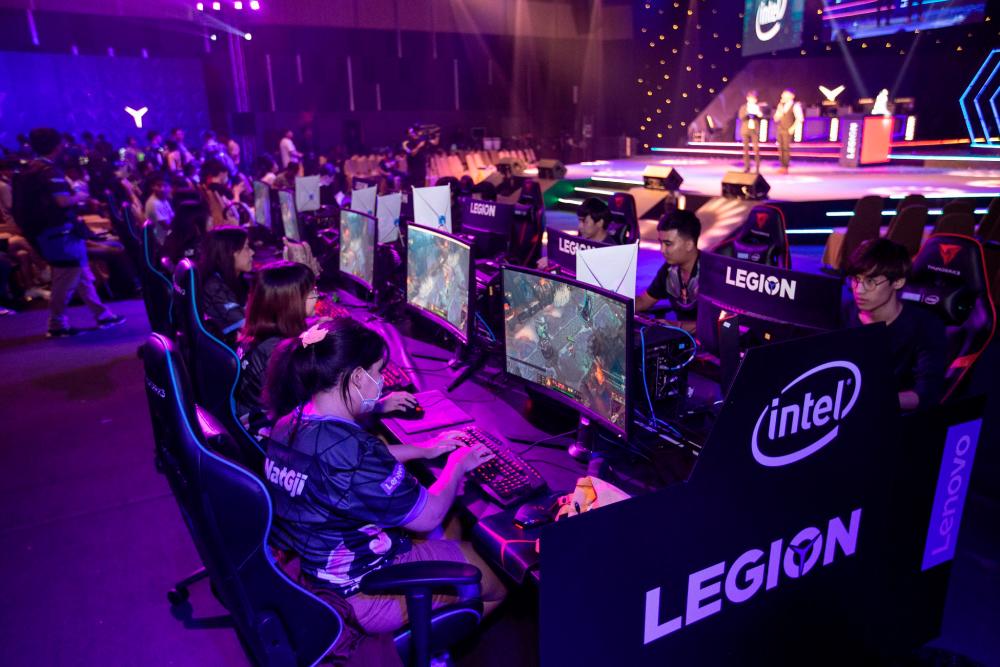ALTHOUGH eSports has seen a boom in the past couple of years, many still have a problem understanding this new form of competition that uses video games.
To understand what eSports is, we must first understand the definitions of ‘game’ and ‘sport’, and the differences between them.
When it comes to eSports, many people may find it hard to accept the fact that playing video games can be a sport.
By definition, a sport is an activity involving physical exertion and skill, in which an individuals or teams compete against each other for entertainment.
In other words, a sport is a form of competition that requires effort from both the mind and the body. Therefore, activities like food tasting are not a sport, but competitive eating can be.
A game, on the other hand, is an activity that one engages in for amusement or fun. However, in eSports, the focus is more on games as a form of competitive activity that is defined by rules.
The term eSports often evokes the image of multiplayer video games played competitively for spectators, typically by professional gamers. However, as you can see from the definition itself, eSports is much more than that.
Types of eSports games
The categories of games played as an eSport are numerous, much like the many types of sport we see at the Olympics.
These games are also divided into various genres, similar to sport that are generalised into events such as track and field.
The genres of games range from first-person shooter to fighting games, real-time strategy, racing, sports games, strategy card games, and multiplayer online battle arena (MOBA), to name a few.
Much like regular sport, there are casual players as well as professional ones, and events that cater to both professional and non-professional players.
In eSports, each game is played in its distinctive arena or playing field. The game platform, and how the game is played, determines the arena.
For example, a strategy card game like Hearthstone can be played on multiple platforms such as PCs, phones, and tablets.
Competitive events for this game can range from small – such as those organised by gaming shops – or big, such as world tournaments held in convention halls.
The money in eSports
Those who do not understand eSports are usually baffled over how players can make money. However, it is not that much different from any other sport.
While Olympic sport usually get assistance from the government and other highly-publicised sources, there are three main areas where eSports makes money: teams or individuals (professional players), events (location and organisers), and media (traditional and new).
In all three areas of revenue in eSports, sponsorships and advertisements are the main sources of revenue for not just the players, but also event organisers and broadcasters.
Players, for example, are not only given hardware by tech manufacturers to use when they play, they also wear sponsors’ logos on their jerseys as well.
Moreover, marketable players are treated like celebrities. They get endorsement deals for brands and products, and also earn income through streaming partnerships, making appearances, profit sharing, and participating in events.
For the event organisers, a tournament could also generate revenue through profit-sharing, ticket sales, registration fees, as well as by selling the rights to stream events.
Games media companies could organise these events themselves, and sign partnerships to ensure that they are the premium source on everything eSports.
The more eyes watching them, the more they can make from advertising and sponsorships.
Top eSports games
Eight games dominate the list of top anticipated eSports tournaments this year. They range from MOBAs and first-person shooters to newcomers such as battle royale (an elimination-style game in which the winner is the last competitor left standing).
Topping the list is Fortnite Battle Royale, where 100 players enter an arena at a time, followed by League of Legends, and Dota 2, which have a longstanding tournament history.
At number four is the first-person shooter Call of Duty, followed by Counter-Strike (a classic), Overwatch (a hero based first-person shooter), and Halo (also a classic).
The list is capped by another popular battle royale game, PUBG (PlayerUnknown’s Battlegrounds).
What about other games from other genres?
Well, just because they are not on the list doesn’t mean they are not as good. Just like regular sport, some are bigger than others.
And because they are so many of them, there is bound to be one that could entertain you.










